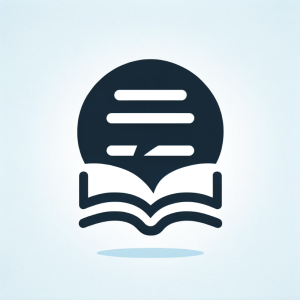Using LLMs for Teaching and Learning
Student Use of ChatGPT
Introduction
Whereas the instructor section was divided into “Strengths” and “Limitations,” in the student section, we follow each strength immediately with a robust discussion of the limitations and drawbacks of the tool in that particular context.
Some of the strengths of LLM-based tools that are useful for students include:
- generating concept explanations, examples, sample problems;
- creating study or review materials (summaries, flashcards, practice problems, etc.);
- improving writing and coding;
- summarizing ideas; and
- brainstorming and generating hypotheses/ideas.
Generating Explanations, Sample Problems, and Study Materials
In the same way that instructors can use ChatGPT to create descriptions of concepts at various levels, students can use the tool to generate simplified explanations of complex topics. The caveat for students, however, is that they are often not able to know whether the responses are accurate. For some straight-forward or commonly searched concepts, answers may be more or less reliable, but an expert only needs to spend 15-20 minutes interrogating ChatGPT (or a tutor app such as Contact North’s AI Tutor Pro) to find that errors will appear. Often, the expert can correct ChatGPT and send it on its way to re-do the question. However, a student would not be able to identify—let alone remedy—these errors. And often, correcting ChatGPT does not prevent it from making the exact error again, a similar error, or brand-new errors. One could argue that effective prompt engineering may make for more reliably correct responses, but again, how is a student to know exactly the ways in which ChatGPT is likely to fail, in a particular discipline, in order to effectively craft prompts? Unlike a human, who might admit to not knowing something, ChatGPT will just churn out its incorrect ideas with the same level of polish as its correct ones. Just as students are accustomed to believing what they read in their textbooks and many corners of the Internet, they will more likely than not believe everything that ChatGPT says.

Students can ask ChatGPT to provide alternative perspectives on a topic and generate examples of situations or concepts. It can also generate practice problems — with step-by-step solutions—for students to work through. However, the same caveats must be repeated here as above: students are expecting—and deserve—accurate, helpful learning materials. Not only should problems be error-free, but they should also ideally be designed to practice skills that will help students achieve the learning outcomes. ChatGPT may be able to generate “problems,” and the problems may even be correct, but students may not be practicing what the instructor intends. The solution to this is not to dismiss ChatGPT outright, but to have an expert vet the generated exercises for accuracy and appropriateness. Some might argue that it’s no big deal if students get one or two inaccurate problems from ChatGPT, but no qualified instructor would ever give their students a stack of material that they knew contained errors, especially when students have no way of knowing which problems or paragraphs contain the errors. Students will just learn the incorrect material along with the correct material. Or they will learn to do problems incorrectly, or waste time trying to figure out why their work doesn’t match what they did in class and start to wonder which other things they may have not properly learned.
There are other ways that students can leverage ChatGPT’s strengths and natural language-based interface; however, these are also the ways for which students need to be especially aware of their course and institutional policies around appropriate GenAI use.
Improving Writing and Coding
ChatGPT is good at helping students improve their writing: students can input a paragraph of their writing and ask ChatGPT to rewrite it or suggest improvements. Current students are quite accustomed to having automatic spellcheck and grammar suggestions in their everyday word processors—in addition to tools such as Grammarly, ProWritingAid, and LanguageTool—and ChatGPT is the next logical step. Indeed, as of this writing, there are multiple plug-ins to integrate ChatGPT with Word and Google Docs, and both companies have plans to fully embed GenAI functionality seamlessly into their products (Liu & Bridgeman, 2023).

STEM students who are studying in a language other than their native tongue will find ChatGPT’s language and writing abilities helpful, where they can practice discipline-specific vocabulary and technical writing. Similarly, students can get ChatGPT to translate material into their native language for ease of use, although as always, they must be cautious with the accuracy of such translations.
ChatGPT is also good at explaining programming concepts to students. There are a variety of extensions related to manipulating code (GitHub Copilot; FavTutor), as well as tutors such as Codecademy which uses a case study to teach students about debugging code. ChatGPT is particularly useful in assisting with the more mundane and tedious parts of coding, often lumped together as “code quality” or “programming hygiene.” These include evaluating and assisting with code readability, debugging, and even avoiding “code smells” and other best practices.
In all cases, students must check course policies to ensure that the tools they are using do not go beyond what is permitted; instructors absolutely must have clear and comprehensive policies on AI tool (and extension) use.
Idea Generation and Brainstorming
Students can use ChatGPT—alone or with a study group—to brainstorm project topics, research ideas, methodologies, or next steps. What ChatGPT lacks in accuracy of facts or calculations, it makes up for in idea generation, often in lists. Because LLM-based tools do not “know” what is real and what is not, they can sometimes provide interesting ideas in a brainstorming context.
For students and professionals alike, one strength of ChatGPT is its ability to help with writer’s block. Some instructors provide students with prompts to help them start interacting with ideas and explanations on their own (Cooper, 2023).
Career Guidance

Preparation for job interviews or oral exams is another use case at which ChatGPT excels. LLM-based tools can generate typical interview questions and provide advice for technical or discipline-specific interviews. They can be asked to role-play as an interviewer, interviewee, and provide feedback or scores on performance in these simulated scenarios. An Internet-connected tool such as Bing/Copilot could help students research details of companies or institutions they will be interviewing with. LLM-based tools can give students feedback on their resumé or CV, as well as help with formatting and proofreading.
Conclusion
The bottom line is that students need reliable resources for their learning, such as textbooks and course notes, and ChatGPT cannot always be considered reliable. While ChatGPT may have a valuable role as a brainstorming partner or editor (as permitted by course policies), it is not yet reliable enough to be a consistent source of accurate information. Vasconcelos and Santos (2023) assert that users can improve ChatGPT’s accuracy by writing good prompts:
The process of crafting a prompt that elicits the desired response is a crucial aspect of the iterative reflections and interactions that occur when using generative AI-powered chatbots (GenAIbots) as objects-to-think-with. This approach encourages students to think critically and refine their understanding of various concepts while actively engaging with the AI-powered tool.
However, this is a chicken-and-egg situation: students cannot learn to think critically and to spot misinformation simply from interacting with a tool; this must be a scaffolded process undertaken with a subject-matter expert. Students can only think critically about issues in which they have some grounding: if they are asking ChatGPT to explain a new concept to them, they have very little background to know if the information is true, let alone whether ChatGPT is giving them the best explanation.
For this reason, students should be cautious when independently (that is, without instructional oversight/vetting) using ChatGPT for any of their studying.
Media Attributions
- This image was created using DALL·E
- This image was created using DALL·E

